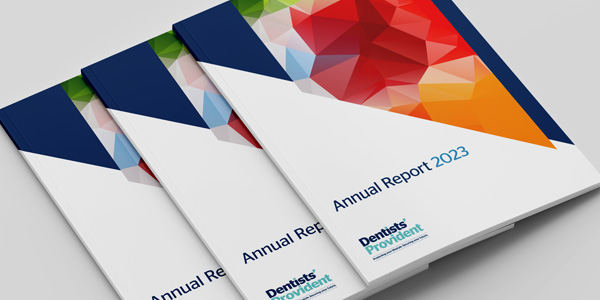
Opening any newspaper, reading any blog post or social media chat, or having a catch-up with friends or family, and we all know what the first topic of conversation will be - COVID-19. It has had a profound effect on our personal and professional lives with isolation, business concerns and health worries, to name a few.
Whatever your individual worries, it is essential that this winter we protect our physical and mental wellbeing by considering the sources we read, how we preserve our personal and professional relationships, and how we look after each other.
Scientific sources
Universities, clinical journals, publishers and educational institutions are sharing all they can to give us the right information to help us through this pandemic. While sources like these are likely to be more reliable than the general media, it really depends on your particular interests and how much detail you want, balancing the need to be informed but not overwhelmed.
The International Journal of Epidemiology is already looking at what lessons we can learn from this pandemic. Nature have an academic paper published every week with topics ranging from building antibodies, Artificial Intelligence (AI), the impact of drugs and socio-demographics as well as a dedicated page about dentistry and COVID-19. Wiley have an online library with practical resources for learning about the virus. UCL are ensuring their cross-disciplinary research and expertise is focusing on COVID-19 and, since December 2019, Imperial College adopted a policy of immediately sharing research findings from their COVID-19 Response Team.
Scrolling through these sites and academic papers, you are filled with confidence at how much time, resource and energy is going into solving this pandemic, but they also reveal how much we still don’t yet know, with endless questions and regularly evolving scientific information. And it is this evolving information that is giving us substantive personal and professional guidance and advice, as well as providing recommendations to the government to make decisions that have an impact on our lives.
While these virologists, behavioural scientists, epidemiologists, immunologists and pharmacologists are the scientists at the forefront and experts in their own fields, they have different approaches, theories, models and research results and don’t always agree on the best solutions. You can understand the difficulty; dentists can disagree on a treatment plan for a patient, supported by a wealth of experience in dental care, with research and materials to back it up. These scientists however are learning largely as they go, and they aren’t doing it behind closed doors like they might have previously, they are very much in the public eye daily, working against a backdrop of economic, political, sociological and moral implications. This is when information in the public domain can become skewed, leading to conspiracy theories and dangerous misrepresentations of fact. This, on top of uncertainty at home and work can play havoc with our mental health. And this becomes even harder when you have the lives of people in your hands with your patients, team members and family to worry about.
A snapshot of this year
The New Scientist, for example, have covered news, opinion and in-depth research in editorials on COVID-19 throughout the year, and the following is a brief reminder of how it has been.
At the start of the year scientists warned us that life could feel very unsettled if we relied on science for all the answers, as the theory was there but not the facts; this was totally new as no two pandemics are the same. We had to accept and trust the evolving ‘facts’ as we understood them at the time, as although science is flawed it is still the best tool we have. It was too early then and, in many senses still is now, to solve this conundrum outright.
Spring saw us in our first lockdown and, as the virus went global, so did the plethora of conspiracy theories. There were criticisms by scientists outside of the government science advisory team, worried about confusing the public and losing trust, as scientists and experts disagreed. Scientists started to realise the strength of the virus and that without immunity it could potentially kill millions globally. At that time there were only 51 people in the UK who had tested positive. By April 21st the estimated death toll due to excess deaths in the UK was at 45,000, more than twice the officially reported figure, with scientists telling us to view the numbers with caution, as we didn’t know what stage we were at with viral transmission or immunity.
By the summer, theories were still evolving and directly influencing the government’s restrictions, including the advice to wear masks due to the spread not being restricted to large particles in a cough or sneeze, but smaller aerosols in droplets of breath.
By September we had reached the point of a million deaths worldwide. In a bad year flu kills 650,000 people however in less time COVID-19 had killed far more, with us not even reaching winter and with varying levels of restriction and lockdown, mask wearing and social distancing.
By November we were back in lockdown with the numbers of cases increasing dramatically, still without a reliable method of testing and tracing, cases of infection growing within schools and universities and discussions moving to why some people are asymptomatic and others not. In-depth discussions and worries on long-COVID increased, but now there was a vaccine in sight.
The dental world
This year has been just as uncertain for the dental world, with discussion changing from whether practices could reopen, to what you could and couldn’t do and use once they were. The GDC and BDA have been doing their best to provide regular updates. You just need the time to keep up with the changes to ensure you are complying. The GDC provide links to the latest advice for private and NHS dental professionals across the four nations.
Key messages for the end of October update included details of the low, medium and high-risk patient COVID-19 pathways as well as the different infection control procedures that need to be adhered to, plus an algorithm to help you identify the steps when a member of your team is required to use a FFP3 respirator mask. The BDA has also welcomed the Joint Committee on Vaccination and Immunisation (JCVI) recommending that healthcare workers have priority access to a vaccine when one is authorised for use in the UK, and currently it looks like, where authorised, there is a 90% reliable one to start being rolled out by the end of the year.
Mental health concerns
There is growing concern, due to the length and uncertainty of the pandemic, the personal restrictions in lockdown and not seeing friends and family, that there could be a negative impact on people’s mental health. And the winter months gives us additional challenges, with the dark inclement weather, concerns about Christmas and further changes to the way we work.
Leaders across the UK are recognising this, and taking mental health seriously, for example prioritising keeping schools open and considering how to protect people and their livelihoods better. Northern Ireland were the first to show an awareness of the potential long-term harm of isolation by indicating that anyone who lived alone could see someone from outside of their household. England also changed the rules so that if you are a single adult in a household you can create a ‘support bubble’ with one other household, again trying to reduce the loneliness felt in the first lockdown.
For frontline medical workers, GPs and dental professionals, there is an increased risk of developing psychological conditions during the pandemic. A 2020 systematic review of the mental health of healthcare workers during previous pandemics suggested an increase in distress and post-traumatic stress, however other studies have suggested mental health concerns occur at the same rate as the rest of the population. Surveys are therefore continuing to ascertain people’s state of mind. A BMA survey of GPs this summer revealed that 53% reported experiencing work-related mental health problems including burnout, anxiety, stress and emotional distress, with 38% saying their condition worsened during the pandemic.
Trying to identify the positives for this winter include the hope that because we have been through a previous lockdown, and that there is now a light at the end of the tunnel with a vaccine, we should feel more prepared, and that could help us deal with it better. The UK mental health charity the Mental Health Foundation suggest that levels of distress are receding. In the third week of June, just less than 50% of the population felt anxious or worried due to the pandemic, down from 62% in mid-March. However, they suggest it is still important to look at the effects over time, especially with certain professions and segments of the population.
If you do feel you or a colleague need help then the NHS and BDA have a wealth of support in terms of confidential counselling helplines, online ‘dealing with stress’ courses, healthcare Apps and local groups.
As I write this, the news and guidance are changing regularly; we are again in lockdown not knowing what our Christmas will be like. University students remain isolated. How you practice is again changing. The ‘R’ value is well over 1 and there are threats of a miserable winter for many of us. Perhaps this time we should try to focus more on what we can control to protect our physical and mental well-being, being careful what we read and what our sources are, making time to get some outdoor exercise whatever the weather, trying to enjoy and appreciate what we have and waiting for the scientists to learn enough to get us through this.
References available on request.
This article is intended for general information only, it is not designed to provide financial, health or other advice, nor is it intended to make any recommendations regarding the suitability of any plans for any particular individual. Nothing in this article constitutes an invitation, inducement or offer to subscribe for membership or additional benefits of Dentists’ Provident.
No responsibility or liability is assumed by Dentists’ Provident or any copyright owner for any injury or damage to persons or property as a consequence of the reading, use or interpretation of its published content. Whilst every effort is made to ensure accuracy, Dentists’ Provident, the authors, Editors and copyright owners cannot be held responsible for published errors.
Dentists’ Provident exercises editorial control only over material published and/or produced by it. No responsibility or liability is assumed by Dentists’ Provident for any articles produced or reproduced in third party publications and/or websites.
The views or opinions expressed do not necessarily reflect views of Dentists’ Provident or copyright owners. Inclusion of any advertising material does not constitute a guarantee or endorsement of any products or services or the claims made by any manufacturer.
If you have any questions, please contact our member services consultants by emailing press@dentistsprovident.co.uk or calling 020 7400 5710.
If you have any questions, please contact our member services consultants by emailing
memberservices@dentistsprovident.co.uk or calling 020 7400 5710.

Our 2024 Annual General Meeting will be held at 91-94 Saffron Hill, London, EC1N 8QP on Friday 24th Ma…
Read more
The 2023 annual report from Dentists’ Provident, a leading income protection provider for dental profe…
Read more
Our next exhibition is the British Dental Conference & Dentistry Show in May, where we look forward to meeting anyone interested in becoming a member or members wanting to discuss their plans.